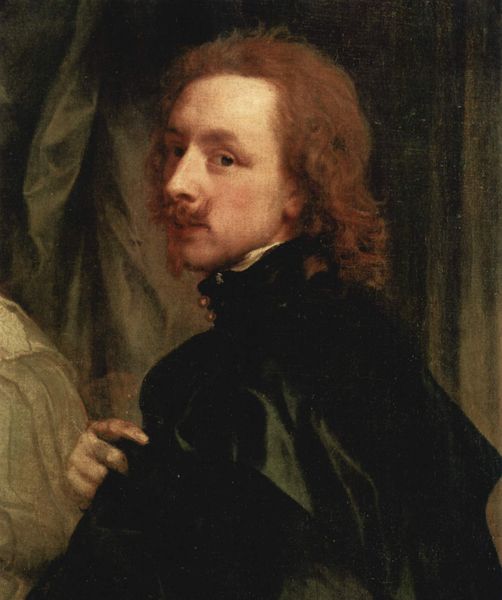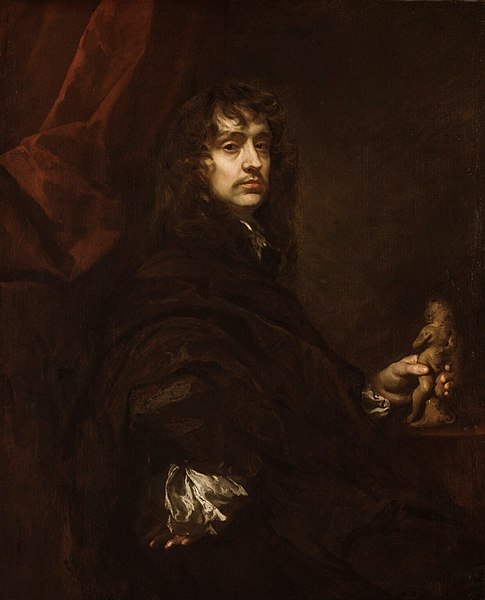Principal Painter in Ordinary
The title of Principal Painter in Ordinary to the King or Queen of England or, later, Great Britain, was awarded to a number of artists, nearly all mainly portraitists. It was different from the role of Serjeant Painter, and similar to the earlier role of "King's Painter". Other painters, for example Nicholas Hilliard had similar roles with different titles. "Principal Painter in Ordinary", first used for Sir Anthony Van Dyck, became settled as the usual title with John Riley in 1689.
Catherine of Braganza, Charles II's queen, by Sir Peter Lely, 1663-65. Portraits were the main output of the Principal Painters.
Self portrait of Sir Anthony van Dyck (1623)
Sir Peter Lely self-portrait (1660)
Self Portrait of Sir Godfrey Kneller (1685)
The Serjeant Painter was an honourable and lucrative position as court painter with the English monarch. It carried with it the prerogative of painting and gilding all of the King's residences, coaches, banners, etc. and it grossed over £1,000 in a good year by the 18th century. The work itself involved painting the palaces, coaches, royal barges, and all sorts of decorations for festivities, which often had to be designed as well. The actual involvement of the serjeant painters in this gradually declined. The post itself fell out of use in the 18th century, after a period when "fine art" painters were appointed, and expected to supervise rather than execute decorative painting, for a good salary.
George Gower, self-portrait, 1579, private collection.
Anne of Denmark. John de Critz, c.1605.






